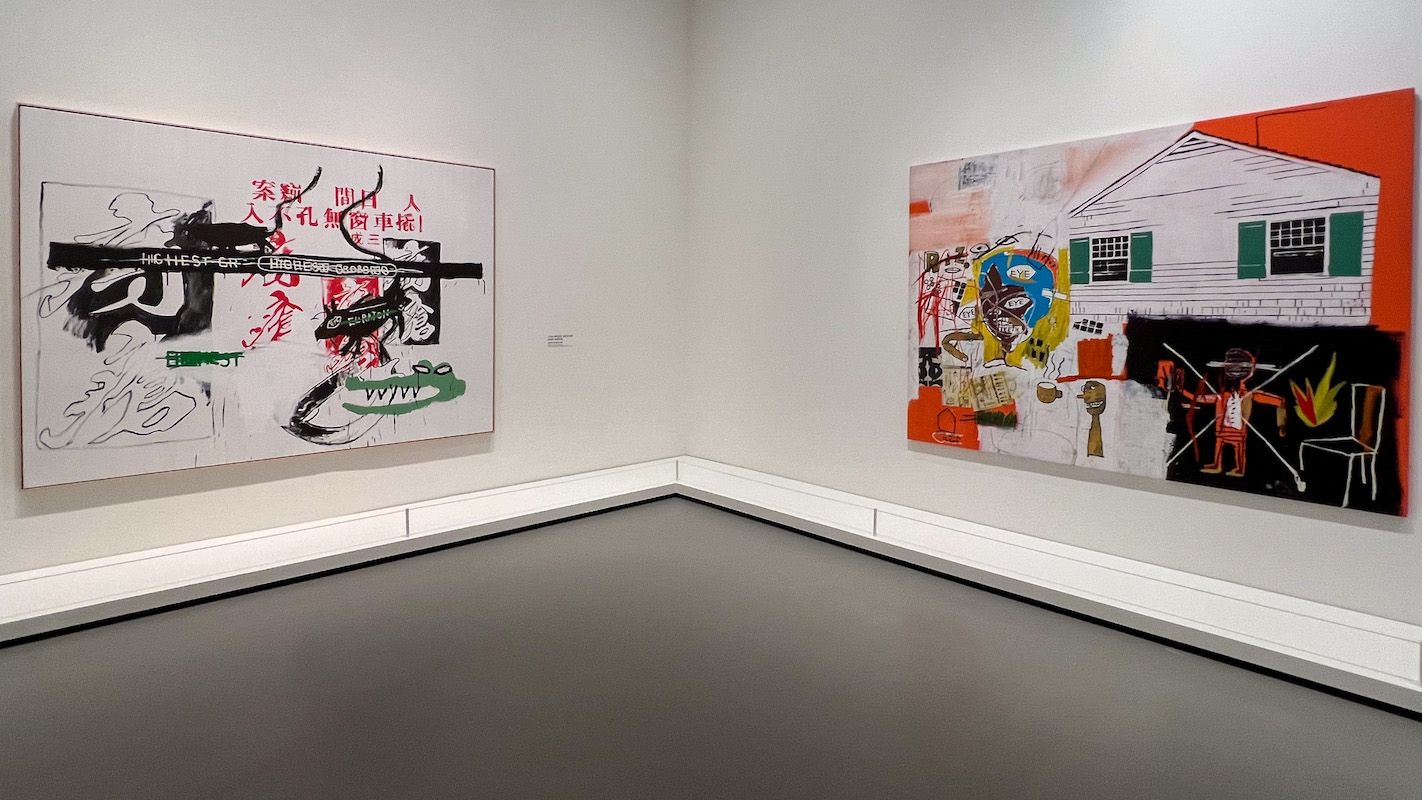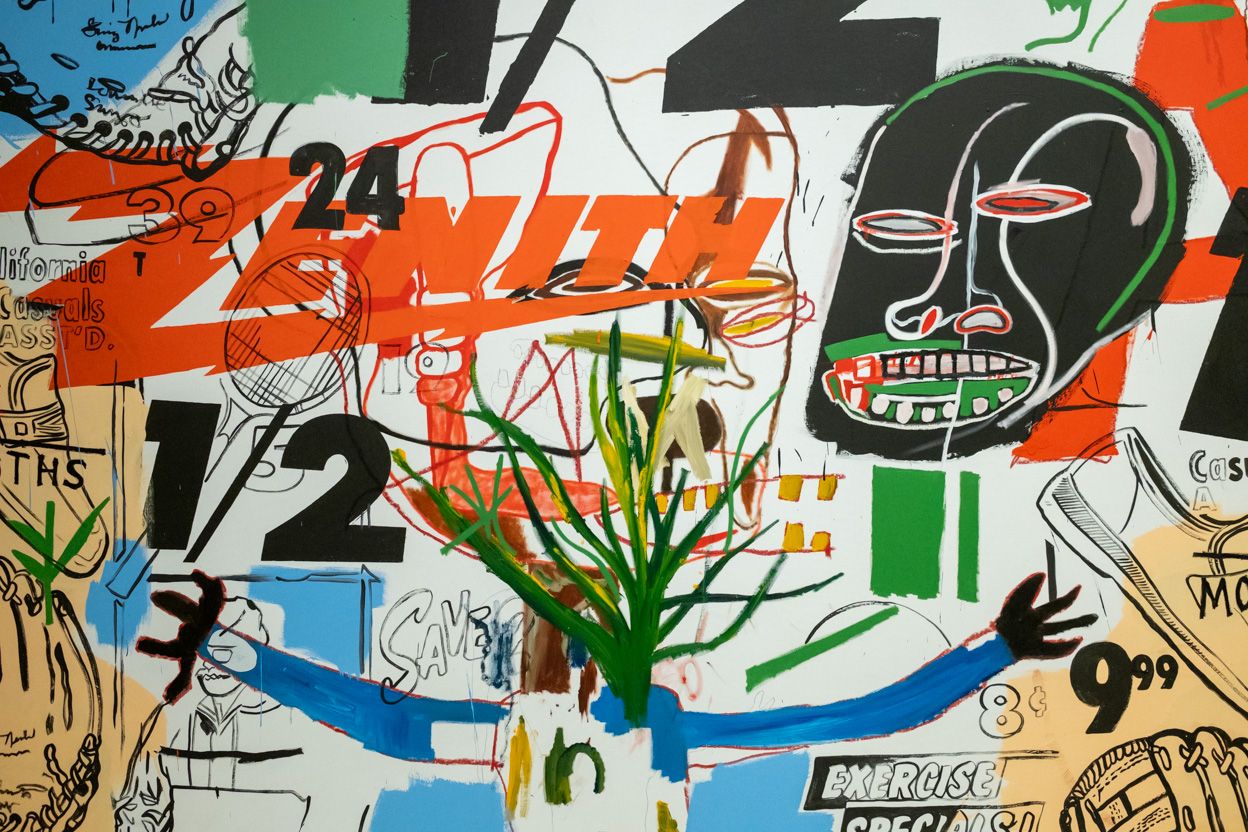
In October 1982, the art dealer Bruno Bischofberger organized a meeting between Andy Warhol, at the time a declining figure in the art world, and the 21-year old Jean-Michel Basquiat, then a rising star in the New York art scene. Bischofberger formally introduced Basquiat to Warhol at the Factory where Warhol took a couple of Polaroids of Basquiat, who then asked if he could hand the camera over to Bischofberger to take a double portrait of the two of them. Basquiat famously seized one of the instant photographs, rushed back to his studio and less than two hours later had an assistant deliver a painting at the restaurant where Warhol and Bischofberger were having lunch, the double portrait "Dos Cabezas" (1982), which shows the two artists as equals. As Bischofberger recalls, Warhol was excited. “I’m so jealous! He’s faster than me”, he exclaimed.
It marked the beginning of a friendship. Warhol liked Basquiat because of his youth, enthusiasm, energy and spontaneity. Basquiat for his part was enthralled by Warhol’s fame and by his eclectic style, which matched his own.
In 1984 Bischofberger suggested that they create some paintings together. Initially he proposed a third collaborator, Francesco Clemente, but after creating a couple of paintings, Basquiat and Warhol continued working together.
What strikes most about their collaboration is the sheer size of the paintings: they are the largest either artist ever created. Warhol would typically put down a background consisting of his signature pop art symbols of corporate logos and advertising slogans, to which Basquiat would add his own imagery. The resulting paintings are colourful and vibrant.

Over a period of one year Basquiat and Warhol thus produced around 160 paintings, a small selection of which was shown at the Tony Shafrazi gallery in New York in 1985. The show was run into the ground by critics and two months after the show none of the paintings had sold. A critic for The New York Times called Basquiat Warhol’s “mascot”. Basquiat was deeply hurt and instantly ended their collaboration.
Critics may have missed the social commentary implicit in Basquiat’s contribution. Indeed, at their best the paintings are emblematic of the cultural and sociopolitical clashes of the late 1980s, which still resonate today.
Now for the first time the Fondation Louis Vuitton in Paris brings together a large selection of the paintings that Basquiat and Warhol created together. The exhibition also includes archive footage, which shows a frail and wary Warhol and Basquiat sparkling with energy, as well as works by Keith Haring, Jenny Holzer and other artists, which bring to life the vibe of Downtown New York in the 1980s.
The works that they made together are not among the best that either Warhol or Basquiat created. At least, I favour Warhol’s work from the 1960s and Basquiat’s intricate paintings mixing his signature mask-like faces, skeletal figures and (strikethrough) words. And yet, the exhibition as a whole brims with energy. Here are two artists who enter into a conversation in art, responding to each other, having fun together and learning from each other.
Basquiat was devastated when Warhol suddenly died in February 1987. The final room of the exhibition shows, "Gravestone" (1987), the triptych he made following the death of his old friend. Also shown is "Physiological Diagram" (1985), an unfinished canvas that Warhol had kept in reserve in case they would resume their collaboration. Less than a year later, in August 1988, Basquiat himself died of a drug overdose.
Basquiat x Warhol à quatre mains is at the Fondation Louis Vuitton in Paris until 28 August 2023.